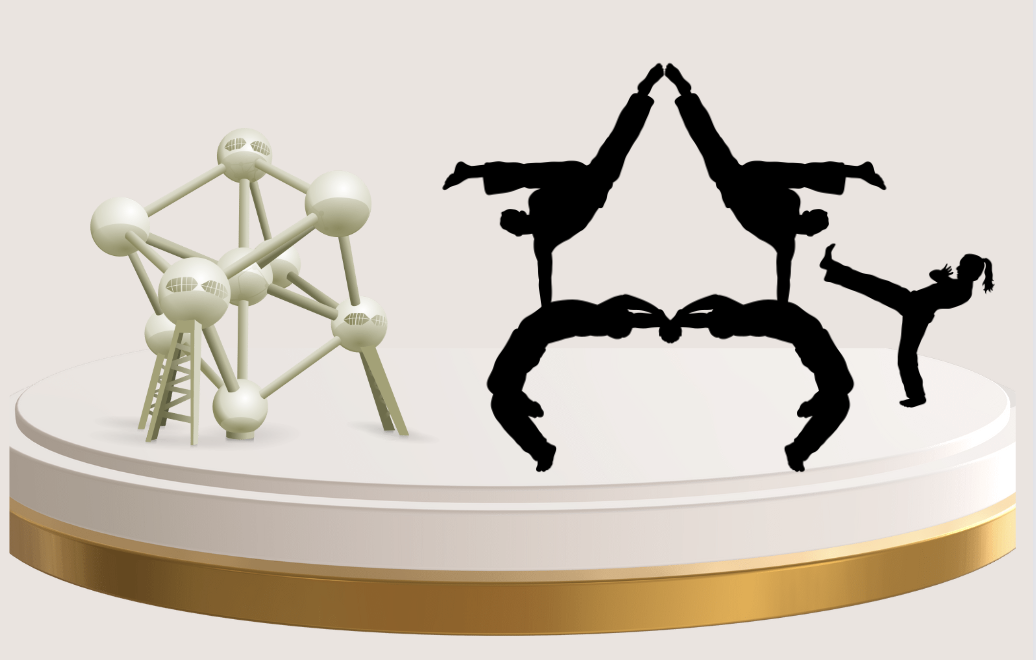Tableau Sculpture for Museum Day! Objective: Students will be able to demonstrate Tableau for a museum audience by creating a contemporary art sculpture of themselves as if they were a sculpture, using their bodies in high, medium, and low positions, as directed by the curator. Standards: TH:Re8.1.7 / TH:Re8.1.8 * The teacher explains the procedures of the "Tableau Sculpture for Museum Day" class to the students sitting in a circle. The situation presented by the teacher for this class is as follows. 1) Tomorrow is museum day. Our Museum has planned various exhibitions for tomorrow's special exhibition. And since it has to open tomorrow, the curators all gather together to observe whether the exhibits are properly placed. But an emergency occurred. Can't you see the most important statue for tomorrow's opening? What happened? You have to be right here, right? What was that statue? Get a list. The assistant curator takes the list and explains it. (This description is only known to the team that will create the sculpture.) The sculpture is a work called ‘Triangle, Oval and Balance’ by famous artist Michelle Kim. Many visitors will come tomorrow to see this work. Teacher: In this situation, I will instruct you (the team member in question) to create a piece of art using your body and gestures in the empty statue space. Let us all save the Museum! 2) After reading the text, the team discusses the story, selects the feeling or scene that comes to mind, and creates a still scene that can convey it most effectively. 3) The team comes out on stage and expresses according to the signal. - One, two, three, click! 4) Other teams imagine what they are saying and say it. Anyone who wants to get a hint can touch one of the expressors. The touched person helps you get to know them in detail by saying simple words or making movements (gestures). 5) Unpack the scene and explain and share the scene and meaning they were trying to express. 6) The student who takes on the role of curator tells the actual title of the work. Students discuss similarities and connections between the actual title and Tableau, which each team of students demonstrated individually. 7)Repeat actions 1-6 above to eventually help all teams demonstrate Tableaum according to the curator’s instructions. Rating scale: -The student perfectly followed her statue's instructions by holding high, medium and low poses while keeping her hands and feet to herself. -The student did high, medium, and low poses while maintaining her own hands and feet, but did not match her statue's directions. -The student did not work with other students to shape the statue as instructed. * Reflection: I got the idea for my lesson plan from a lecture at The Kennedy Center called ‘Unexpected Art with Stephanie Krause T’ presented in the module. In her words, artists find inspiration from everywhere and everything, and her video lectures show how one simple shape can be transformed into a variety of results. I think her artistic philosophy and teaching method were attractive enough to give me, as an artist, an idea to unite art and theater. Stephanie guides viewers through the meticulous process of turning one drawing into three using folded paper and a little imagination. Through her lecture, I decided to create a Tableau play that would be a formative or visual piece of art. She then thought it would be fun to put on a play where several students on the team used their own bodies to create corresponding modern art sculptures, as if she were using her folded paper and imagination to turn one picture into three. In fact, the close relationship with plastic art has already been mentioned in several research papers in the definition of the concept of Tablo as 'painting given life through embodiment', and Tablo also realizes the core thesis of art, which is the perfect harmony between life and artificiality. Therefore, it is interesting that the above class can help you understand theater and art at the same time. And I also discovered, with Theater Game #68-The Creature from her Drama menu, that teachers need vivid, realistic portrayals as if they are happening in the present to bring out artistic expression through play. This will be a keyword that will help students with various levels and experiences in the classroom focus on their classes without falling behind. For example, in The Creature, the teacher instructs a team to move through the process of a creature from awakening to dying as if they were one body. His language is very concise, but the storyline is poetic, understandable, and vivid. So students can predict what happens next and move as a team. You will learn that these vivid and simple instructions can help you become more immersed in the play and increase your understanding.
0 Comments
Leave a Reply. |
Myungja Anna KohArtist Categories
All
Archives
July 2024
|
Proudly powered by Weebly


 RSS Feed
RSS Feed